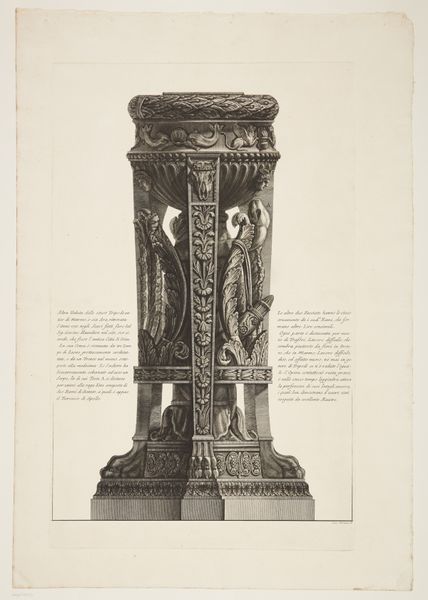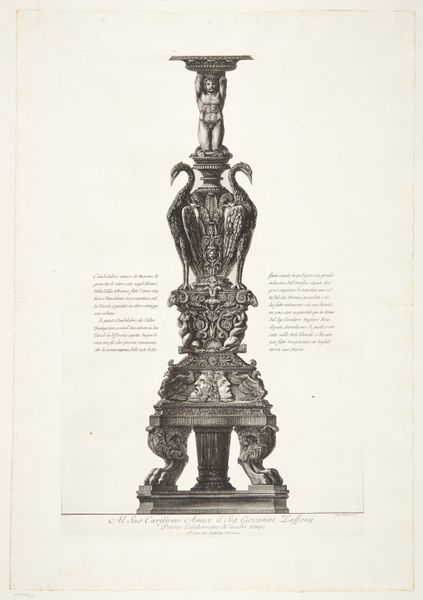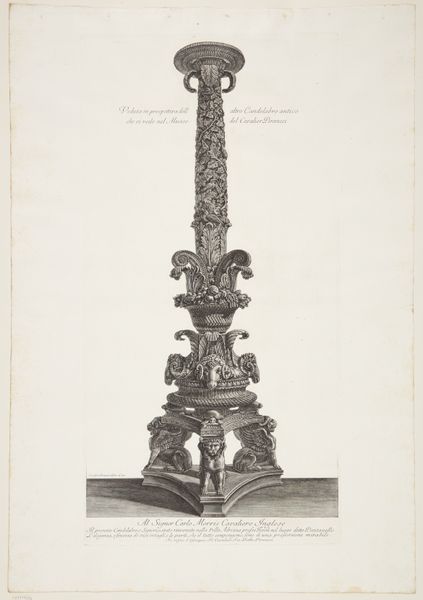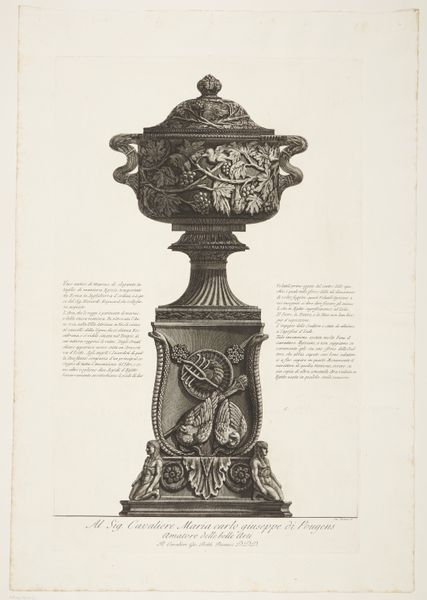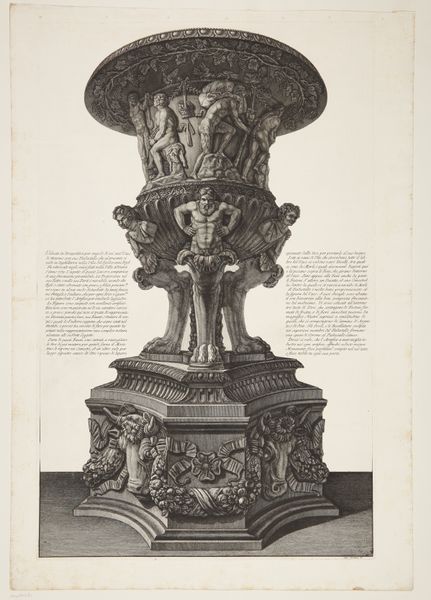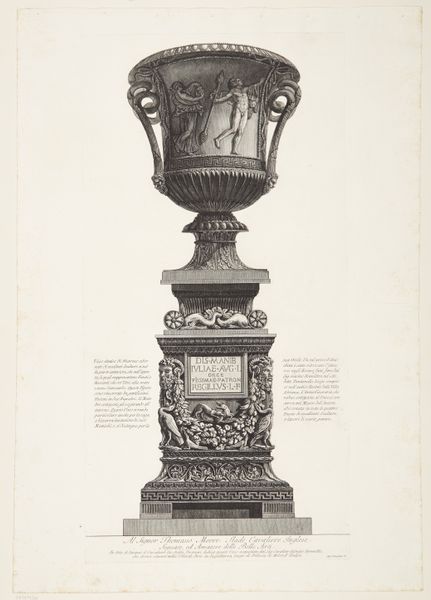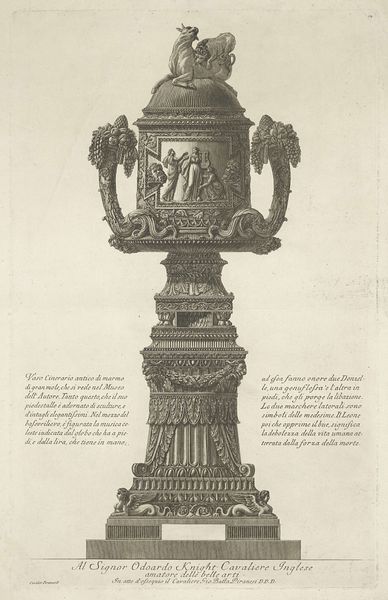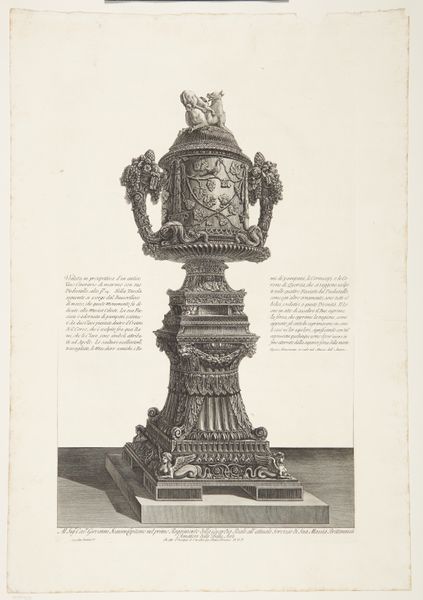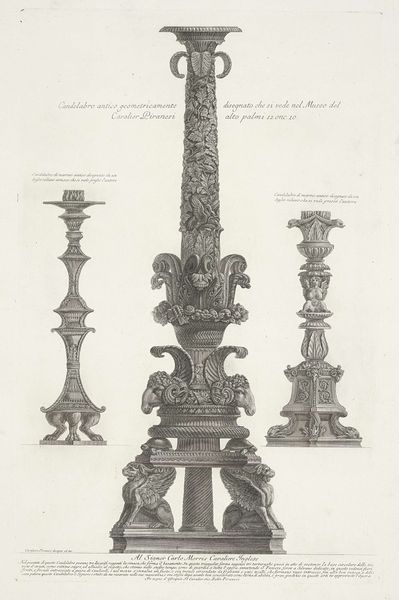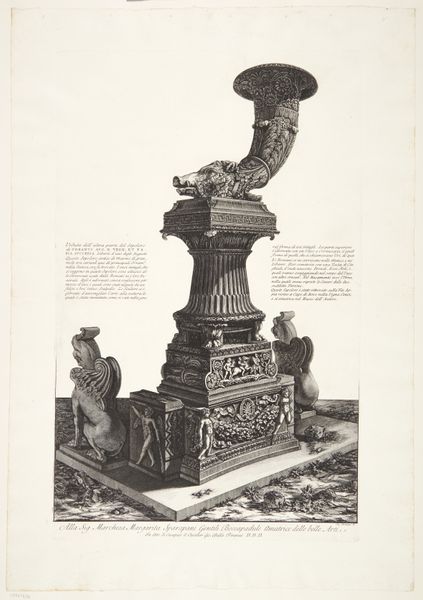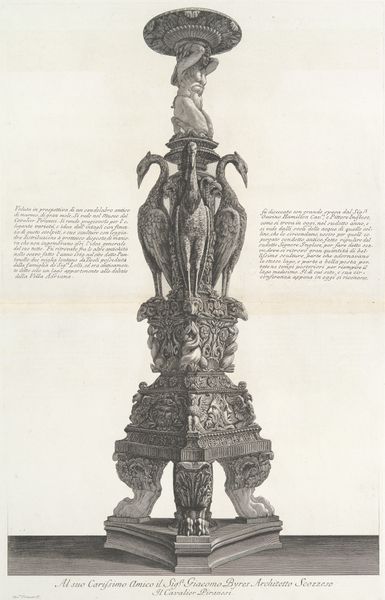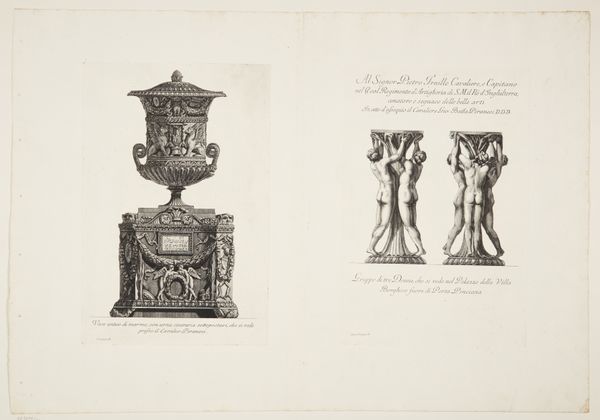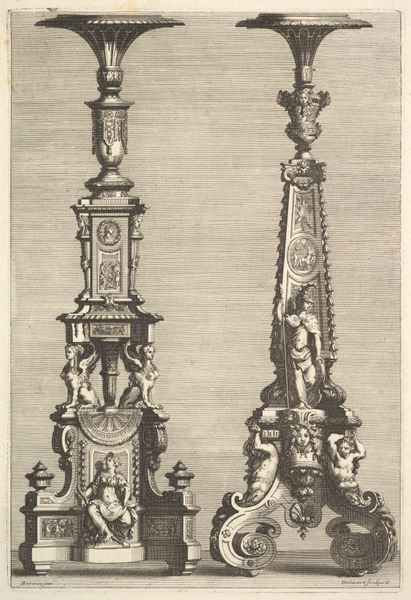
print, metal, engraving, architecture
#
neoclacissism
# print
#
metal
#
geometric
#
engraving
#
architecture
Dimensions: 680 mm (height) x 420 mm (width) (plademaal)
This engraving of a marble candelabrum was created by Giovanni Battista Piranesi sometime in the 18th century. Piranesi was an Italian artist, architect, and antiquarian, renowned for his etchings of Roman architecture and ancient artifacts. This candelabrum, teeming with details and symbolism, reflects the 18th-century obsession with classical antiquity. The use of marble evokes a sense of timelessness and grandeur, aligning with the period's fascination with the power and aesthetic of the Roman Empire. The recurring motif of the bull's head is particularly striking. In ancient Rome, bulls were sacrificed to the gods, representing strength and virility. Here, the bull's head could symbolize the power and wealth of the elite, and the role of sacrifice in maintaining social order. At the base, sphinxes flank the candelabrum, beings that represent wisdom and mystery. Notice how Piranesi’s engraving transcends mere documentation, transforming the candelabrum into a statement about power, history, and cultural identity. It asks us to consider who gets to define and preserve history, and whose stories are told through these grand objects.
Comments
No comments
Be the first to comment and join the conversation on the ultimate creative platform.
